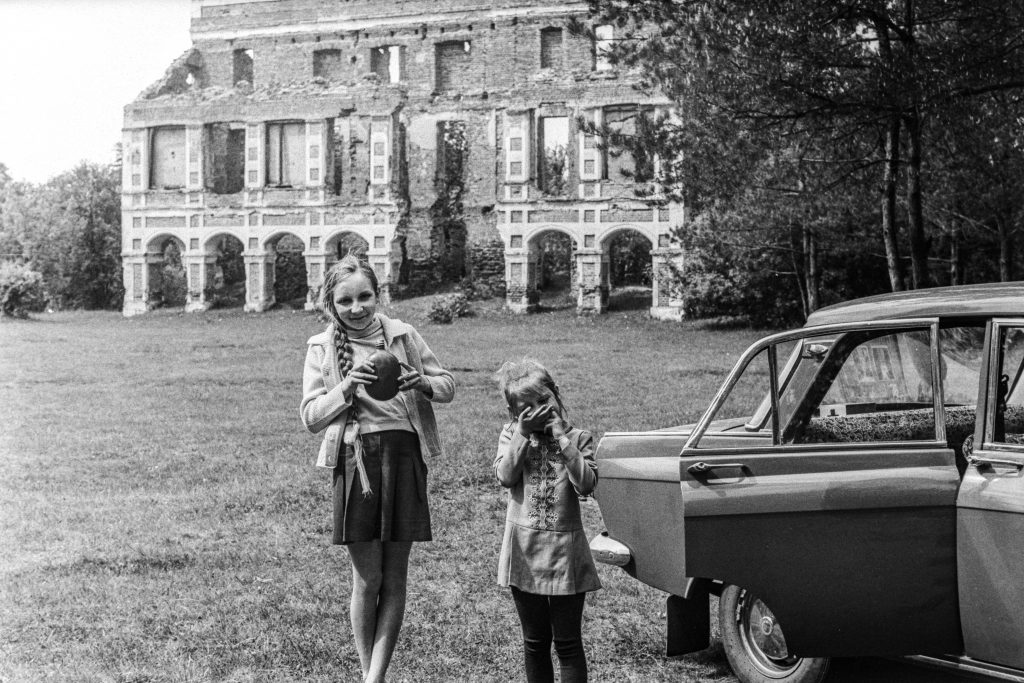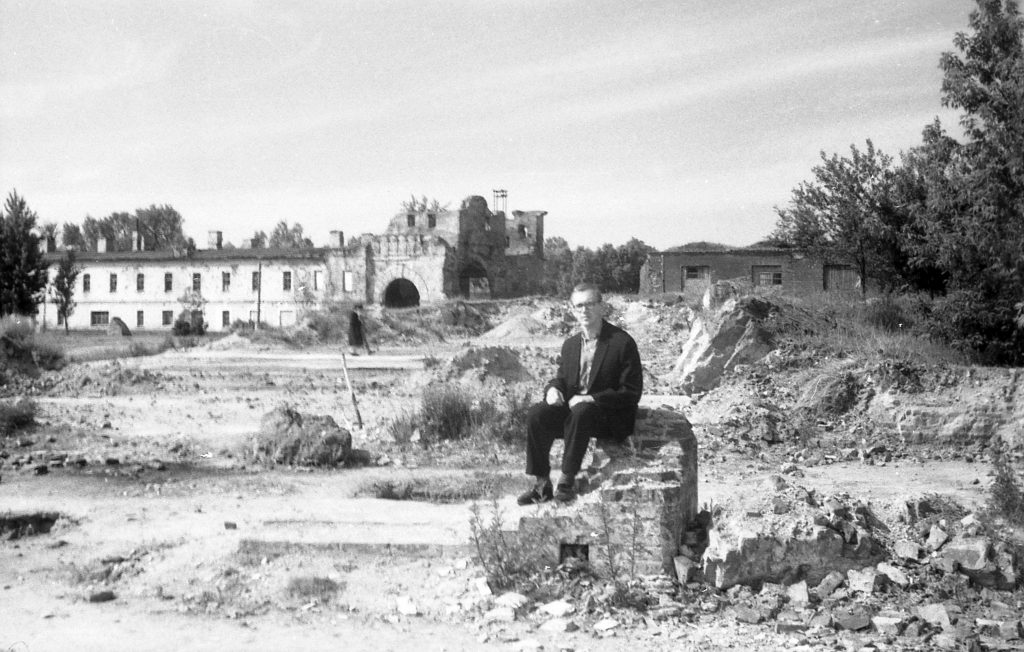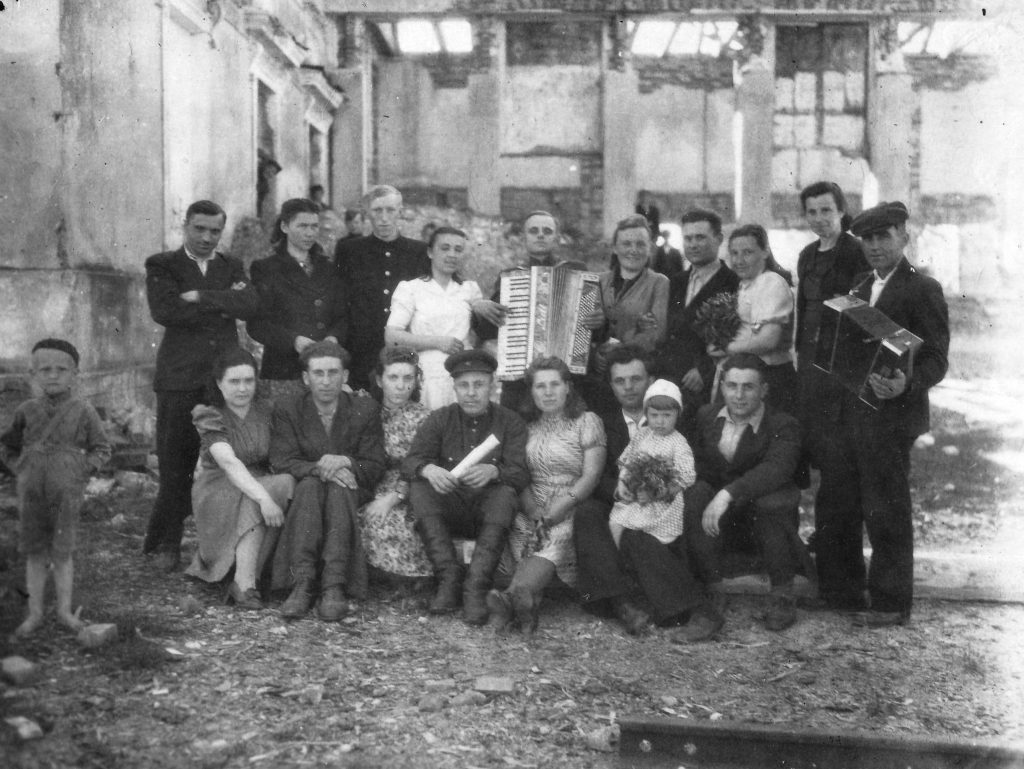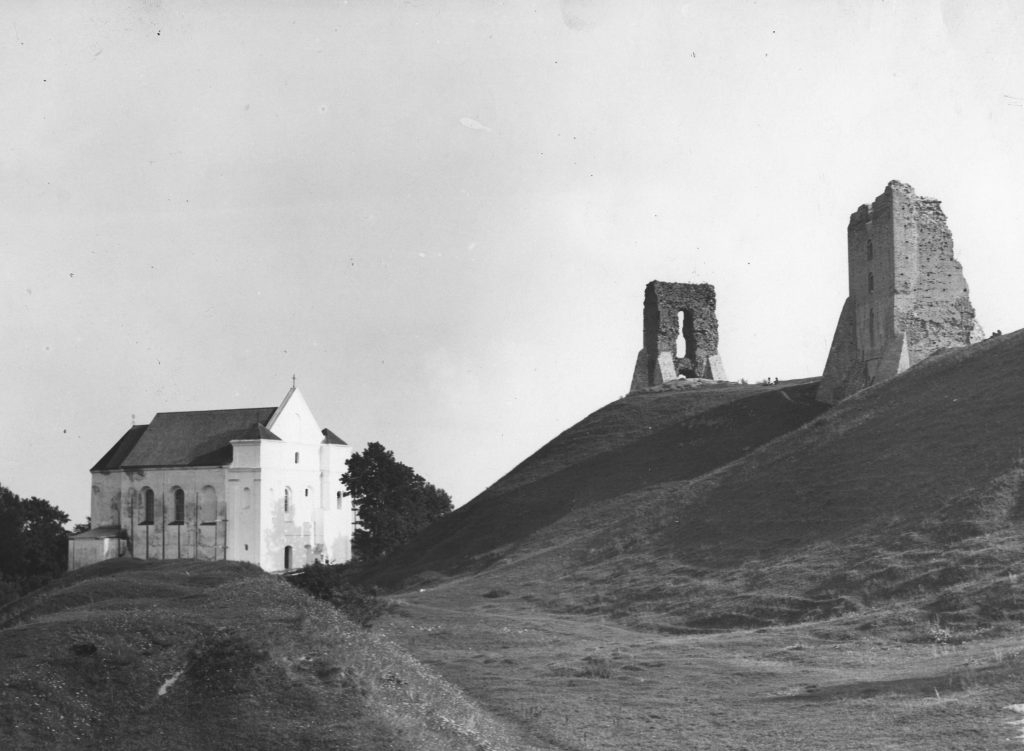
The Memory of Repression in Everyday Life Documents
- VEHA archive. Lesia Pcholka
Photography is a young art, but due to its inherent property of reproduction, it has quickly covered all spheres of social life and is now present everywhere. The place that photography occupies in culture – between art, technology, and communication – determines the disparate approaches to its study. The scientific understanding of the phenomenon of photography does not, however, match the pace of its development. The art historical approach, such as in Walter Benjamin’s essay [1], where photography is understood as a tool for the study of artistic practices, assesses the aesthetic qualities of individual images, biographies of the authors, etc. Archaeological method [2] is based on the understanding of any cultural phenomenon as an archive, visual evidence and characterisation of the system within which it emerges and exists.
A photograph is interesting for the non-uniqueness of its subject and, in the case of a print, for the uniqueness of its object. There are at least three perspectives for analysing a photographic print. There is the subject of the photograph: what we see, what we understand, the images we recognise. Then there is the plane of the photograph itself: the creases, the state of the emulsion, the captions, etc. Finally, there is the invisible, the context behind the photograph: the story of its creation, the creator, the time, the historical and political context, the number of copies, etc. In the case of the digital archival photographs I work with, there are a number of additional criteria that need to be considered in the analysis. Information about the image, the quality and reliability of the data depends on the knowledge of the owner of the photograph handing over the copy.
My focus is on Belarusian [3] archival photography, the state of archives today and their influence on the formation of memory politics. I turn to vernacular (amateur) photography taken from family photo archives, to work with the history of everyday life rather than constructed ethnographic images. Unlike artistic and reportage photography, vernacular photography deliberately follows the patterns of established visual conventions without claiming uniqueness, which makes it easier to find conventional ‘cultural codes’. In this kind of photography, the creator remains invisible, and the main characters are the family rituals captured. On the basis of unremarkable subjects and first-person visual representation, it is possible to see parallels with historical events, experienced traumas and current agenda. In addition, the focus on family archives motivates and engages people in the preservation of photography as an important source of information about the past.
The photographic documentation created and preserved in European countries differs significantly. This is due to the level of wealth, the number of military conflicts and repressions experienced by each country’s population. In totalitarian and authoritarian regimes, such as Belarus, historical archives are often limited, and there are no independent memory institutions engaged in analysing and preserving the country’s history at the state level. In addition, access to many Internet resources is limited [4]. There are no digital archives of photography museums. To fill this gap, I am working to create an alternative mechanism for the preservation of photography. In 2017 I founded VEHA archive, a platform for collecting vernacular photography and analysing the visual history of Belarus. The idea is to motivate citizens to participate in the process of creating an online museum of photography using their family archives. VEHA archive team has two permanent members, and expands when projects are carried out. We announce the collection of digital copies and thematic photos (weddings, funerals etc.) through an appeal on social media. We ask contributors to indicate where and when the photo was taken and the names of the individuals portrayed. Afterwards, the photos are catalogued, processed and retouched. The photographs we collect are analysed in the context of political, cultural and social events of the past and present. In this way, without depriving families of their heritage, we obtain material for further interpretation, and include hundreds of people in the process of preserving the memory. Today, VEHA archive is a publicly accessible photographic archive that systematically carries out interdisciplinary research, organises exhibitions and publishes books.

Accessibility and development of Belarusian photography.
In order to understand what photographic material has been preserved and survived to this day, it is necessary to explain the historical context of photography created in the territory that is now part of modern Belarus. In order to understand what photographic material has been preserved and survived to this day, it is necessary to explain the historical context of photography created in the territory that is part of modern Belarus. Most of the archives available today start from the 1950, with the peak of analogue photography being the 1980s. Older photographs in family archives are rare. The existing photographs dating from the 19th to the early 20th centuries are associated with the names of Anton Prušynski, Benedykt Henryk Tyszkiewicz, Jan Bułhak, Lev Dashkevich and others. Describing the stories of these people will help to understand how photography developed. In 1850, Anton Prušynski opened the first photographic workshop in Minsk, where he created a portrait of Vintsent Dunin-Marcinkievič and many other pictures of famous citizens of Minsk. The workshop operated until 1863. After the January uprising, the authorities found one of the insurgents’ signs, Pahonia [6], on some of the daguerreotypes [5], which was the reason for the photographer’s arrest and exile. Count Benedykt Tyszkiewicz documented the life of aristocrats and villagers. A large photographic archive was kept in his family estate in the Naliboki Forest. Almost the entire archive was burnt down during the Second World War. Tyszkiewicz took some of the photos to France, and only they remain available to this day.
Jan Bułhak created one of the most famous photo-documentations of Belarusian architecture. In July 1944, during the German occupation, his studio was burnt down in a fire, along with almost 30 thousand negatives. During the war, the photographer and his family moved to Warsaw, and later established the Union of Photographers of Poland. His remaining archives have been digitised and are part of the public domain.
Lev Dashkevich was born in Minsk in 1882. He wanted to study medicine and entered the University of Warsaw for that purpose, but was soon expelled for taking part in a strike. He went to Paris for a few years, where he became a photographer. He returned to Belarus in the 1920s. The largest series of Dashkevich’s photographs was taken during an ethnographic expedition in 1923 and documented the life of peasants. These photographs became illustrative material for a 1924 publication on the geography of Europe. In the 1930s, the photographer was arrested in the case of the Union of Liberation of Belarus, which was a political and criminal case initiated against several Belarusian scientists and culture activists. During the occupation of Minsk Dashkevich evacuated to the Caucasus, returning to Belarus in September 1944. Dashkevich’s house was burnt down during the bombing, although part of his archive was transported by the Nazis to Germany in 1943. In the 1950s the photographs were returned to the Historical Museum of Belarus.
All the names listed above are people of a privileged class. Nevertheless, their biographies are associated with repression, war, forced emigration, and loss of archives. Meanwhile, the owners of small photo labs, which covered the basic needs of family history documentation, were predominantly Jews, who represented a significant group of the urban population. Pogroms of Jewish property (including photo labs) and other acts of violence are one of the tragic aspects of Belarusian history of the twentieth century. Moreover, Stalin’s repression of cultural figures and other groups of citizens led many families to destroy their archives, as they were seen as evidence of their bourgeois past.

The history of the 20th century did not see an extended period of time that stimulated the development of conditions for the preservation of photography. Every image we work with is an important material to analyse. A photograph is a document, a reflection of culture, visual evidence of a historical event. Belarusian regime diligently regulates the flow of (visual) information. As early as in the 1990s, all print media and television came under Lukashenko’s control and began to cater to him. Historical facts, cultural heritage stored in archives are not of interest to the current regime, and there is no digitalisation of museum collections. Belarusian culture continues to exist and develop thanks to the individual efforts of actors, despite the lack of support from the state. This has contributed to the fact that creating archives or working with memory is a popular practice among Belarusian artists. Grassroots initiatives and alternative archives collect and preserve information, creating a counterbalance and playing a key role in laying the groundwork for analysis and research. The work of activists in different spheres of Belarusan culture makes it possible to preserve materials, preventing their volume from diminishing over time.
After the outbreak of a Russian invasion of Ukraine, the question of renaming Ukrainian figures from conventionally “Soviet/Russian” was ultimatised; such advocacy does not happen with Belarusan culture. Moreover, because of the current regime’s support for the war, many Belarusians face restrictions, discrimination, and the inability to continue research or creative work in Europe. Inside Belarus, the number of political prisoners is constantly growing [7]. The NGO sector in Belarus has been virtually liquidated, no less than 1,480 organisations have been closed down. There are no more non-state, non-commercial, contemporary art galleries, no independent cultural platforms in the country. The entire Belarusan culture today stands in opposition to the current regime. The repression of a well-known publicist Siarhiej Dubaviec is especially indicative of such policies. He has recently been charged under six articles of the Criminal Code. Dubaviec is a significant figure, one of the initiators, founding fathers and ideologists of the newest Belarusan national revival [8]. The concerted policy of memory represents a resentiment for the Soviet Union and promotes the permanent Russification of citizens [9]. Many organisations and mass media are declared extremist. Working with archives and Belarusan culture is connected with risks of one’s security.
VEHA archive has been active since 2017, so we can draw conclusions about the dynamics of the community’s (non-)participation in public cultural processes. Even though VEHA does not have the status of an extremist organisation, people have become less active in sending photos. Our public activity is still possible because we have chosen the space of family photography, something that concerns everyone but has no obvious political context. By involving people in the process of creating a collective archive, we fight against the existing monopolisation of civil and political discourse.
- In 2023 we started to collect a new collection called Ruins of Belarus, which well illustrates the current state of ruinisation of Belarusian culture. These photographs do not explain the past, but rather emphasise the insurmountable distance between us and the past. Civic initiatives and private archives continue to exist, within the country and beyond its borders. But it is unclear when existing materials will be able to enter the public discourse. What is important is not centred, closed collecting, but horizontal participation and the creation of mechanisms for the transfer of knowledge. The process of knowledge transfer between generations, atrophied by the Soviet system, puts us in a state of endless ‘firsts’, where an institution is inseparable from the person who created it, where after the death of a collector, artist or writer their archives disappear. Political processes are inseparable from cultural and social ones. VEHA archive is an example of a collective, grassroots archive. Through the collection of thematic vernacular photographs, as well as public work with them in the form of exhibitions and book publications, it stimulates communication within the family and restores the demand for the transmission of knowledge about the past from its witnesses. The photographs in the VEHA archive are materials open to researchers. The visual history of Belarus is a part of European history, open, available for interpretation.

-
1. Walter Benjamin: Short History of Photography (Kleine Geschichte der Photographie).
-
2. “The application of the archaeological method, according to which photography is perceived as an ‘archive’, the study of which clarifies the ‘discursive conditions of its formation’, is seen as particularly effective and promising for understanding the phenomenon of photography.” Everyday photography as an object of scientific research. Gurieva M.M.
-
3. By ‘Belarusian photography’ I mean photography created in the territory that is part of modern Belarus.
-
4. Human Constanta: Review of the fight against “extremism” in Belarus in July-September 2022 https://humanconstanta.org/en/review-of-the-fight-against-extremism-in-belarus-in-july-september-2022/
-
5. Department of Archives and Records Management of the Ministry of Justice of the Republic of Belarus. History of the 1863-1864 Uprising on the Territory of Belarus https://archives.gov.by/home/tematicheskie-razrabotki-arhivnyh-dokumentov-i-bazy-dannyh/istoricheskie-sobytiya/arhivnye-dokumenty-i-materialy-3/istoriya-vosstaniya-1863-1864-gg-na-territorii-belarusi-obzornaya-spravka
-
6. Daguerreotype is an early photographic process based on the photosensitivity of silver iodide. The world’s first workable photographic technology, used for two decades and superseded in the second half of the 19th century by cheaper and more convenient processes.
-
7. Pahonia is the coat of arms of the Grand Duchy of Lithuania and its land coats of arms, as well as of the ruling House of Gediminid since the end of the 14th century. In the XX century this coat of arms was used as a state coat of arms — the Belarusian People’s Republic (1918) and the Republic of Belarus in 1991-1995, as well as the Republic of Lithuania (1918-1940; since 1990).
-
8. As early as the late 1990s, most print media and television were already under the control of Lukashenka’s autocratic regime. The current situation can be characterised as a violent suppression of any civic initiatives. The number of political prisoners is constantly increasing in the country. Human Rights Centre Viasna: https://spring96.org/en. After 2020, almost the entire NGO sector was liquidated (at least 1,480 organisations were closed down).